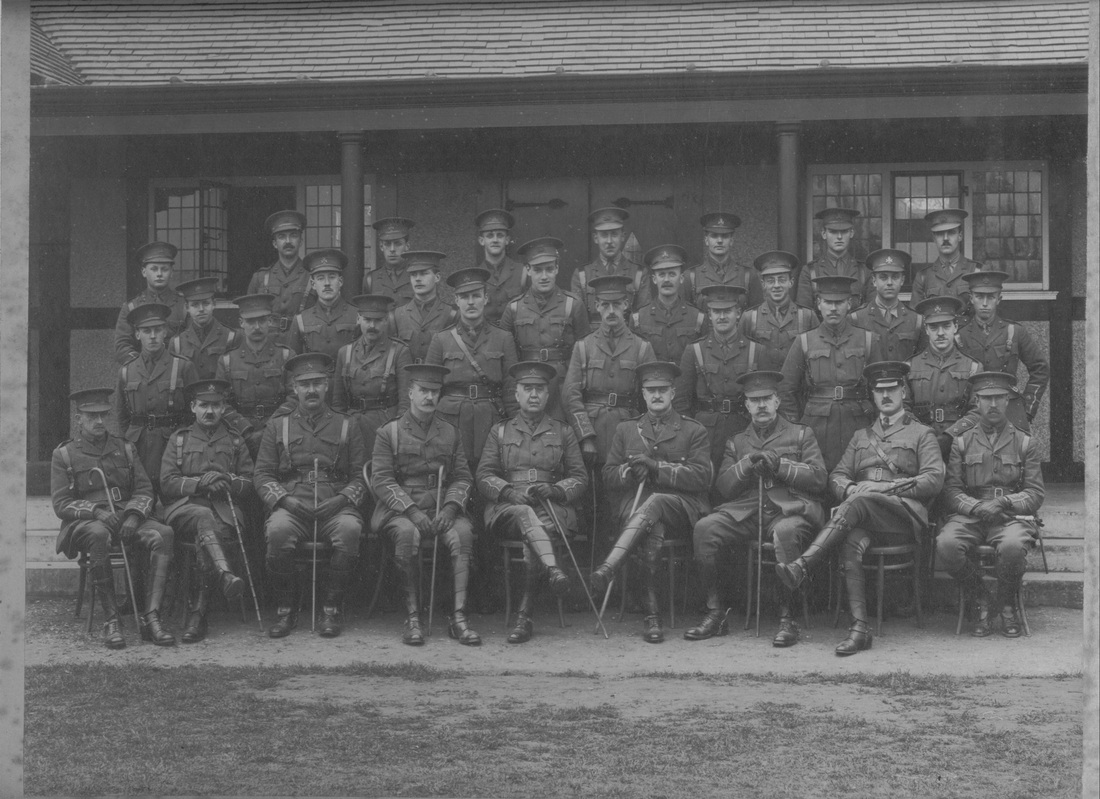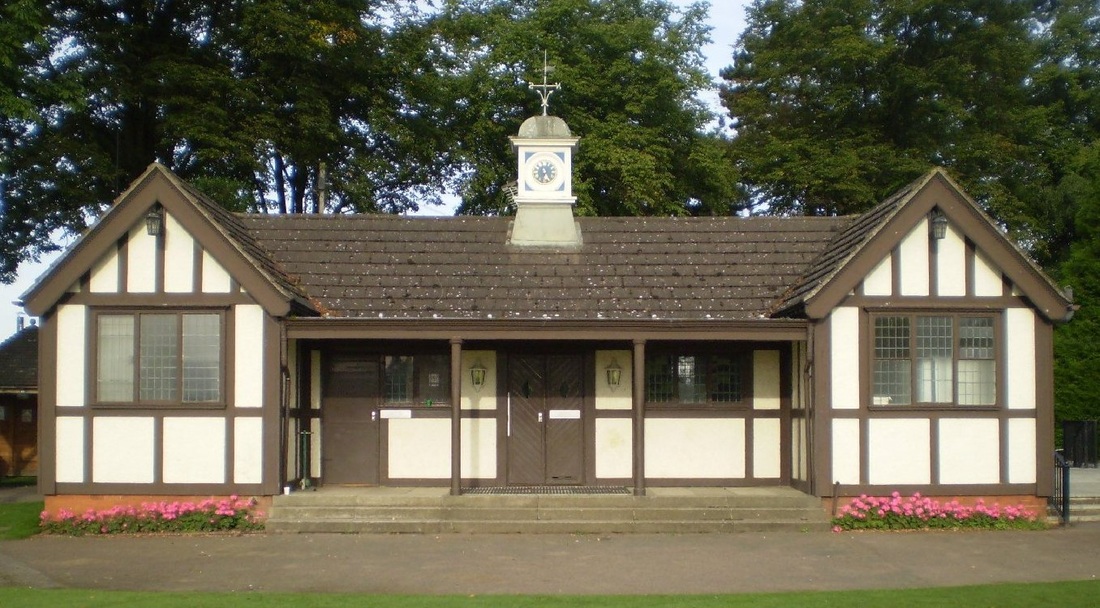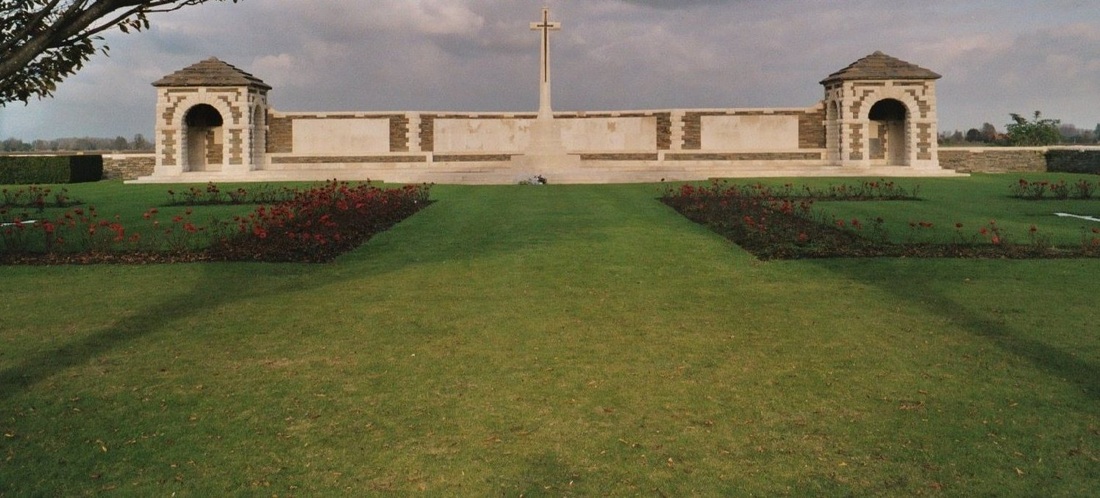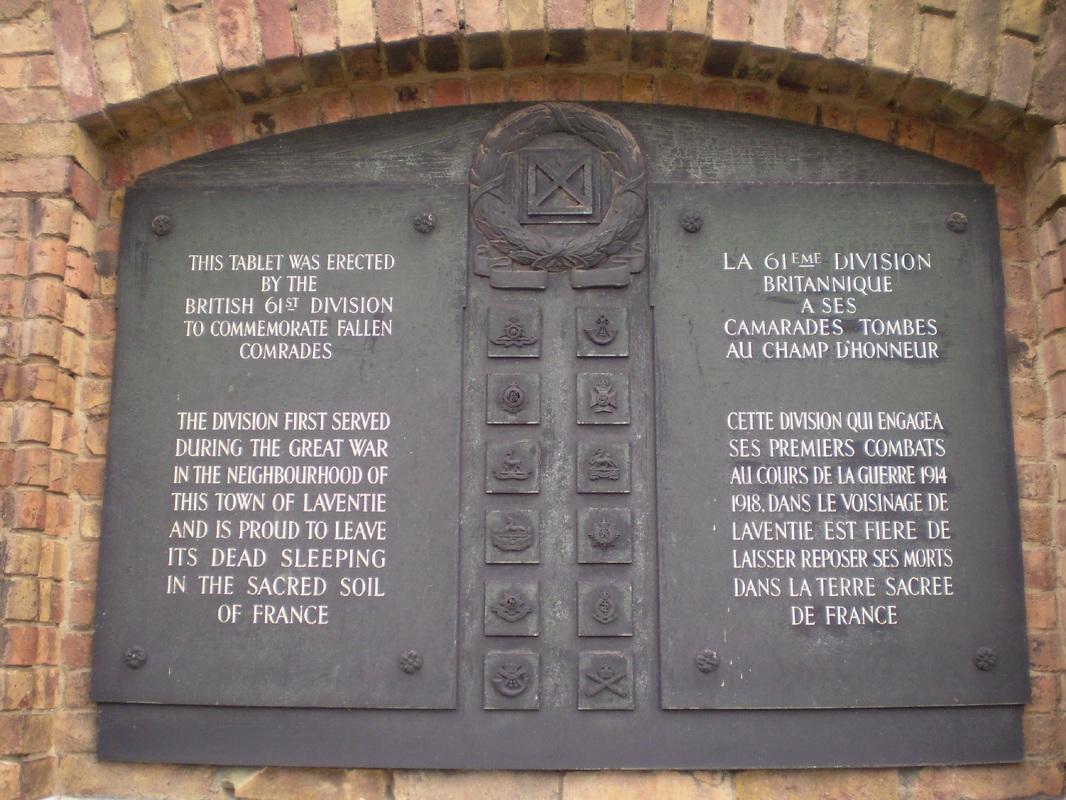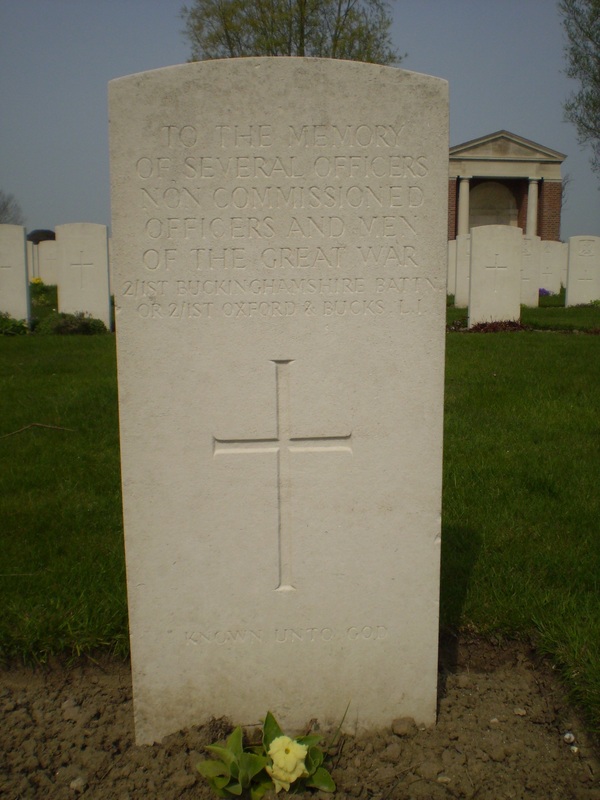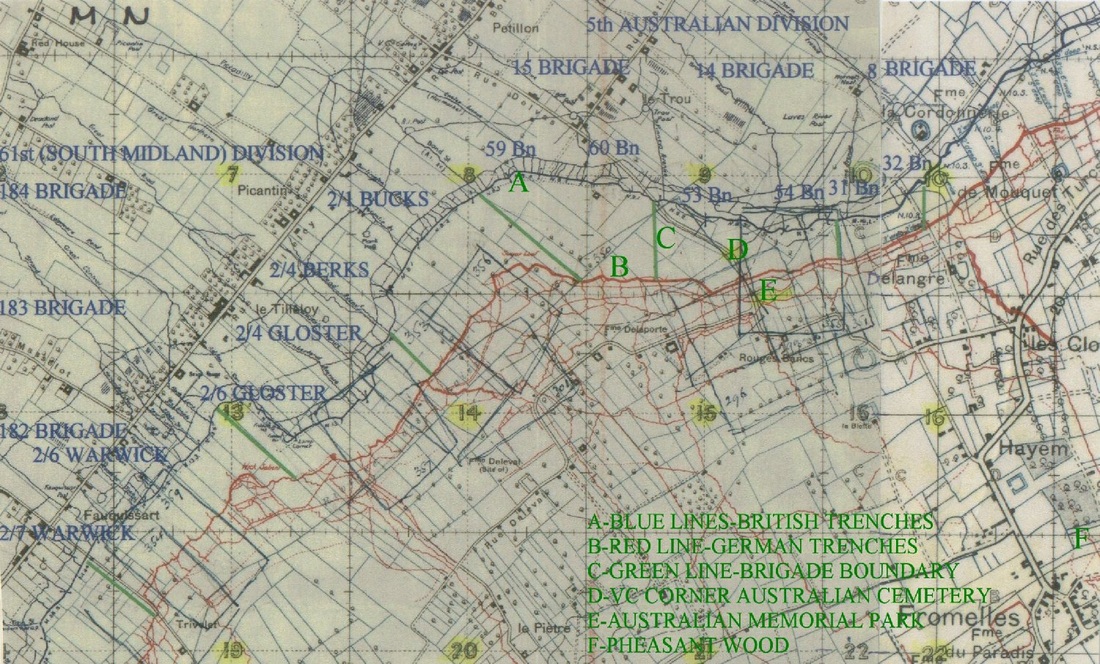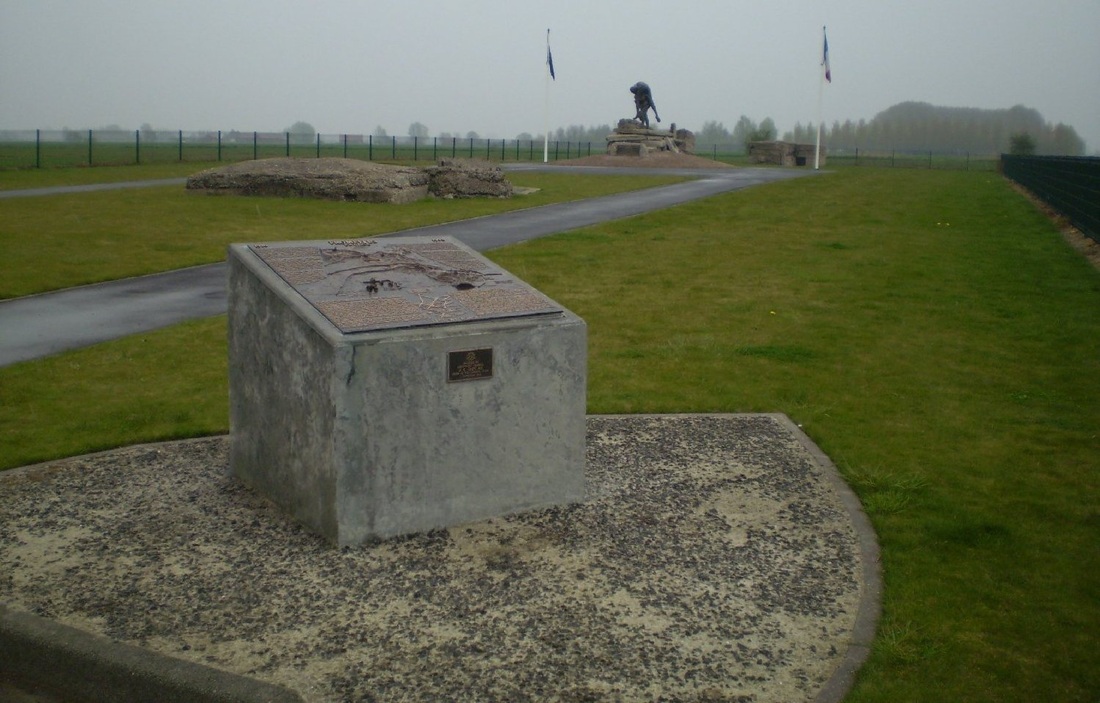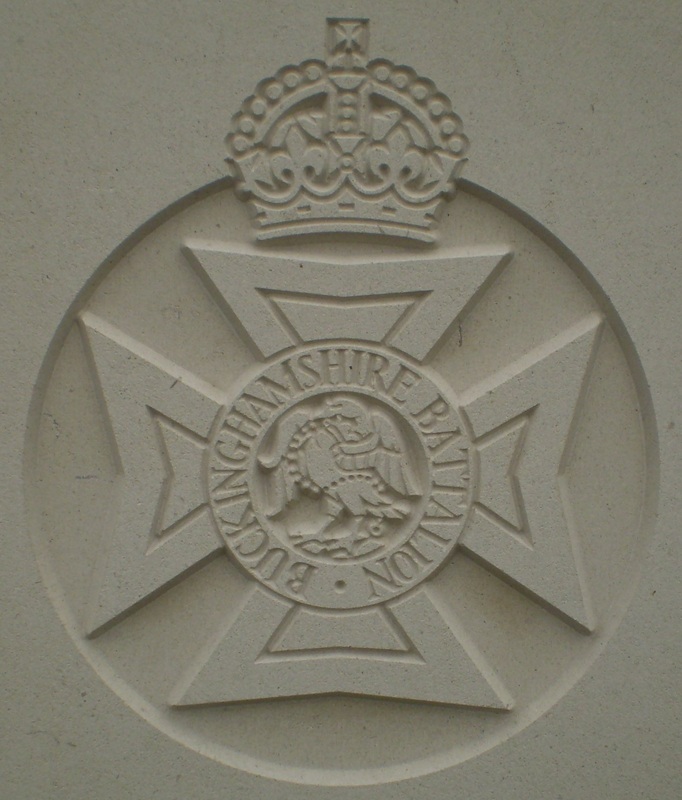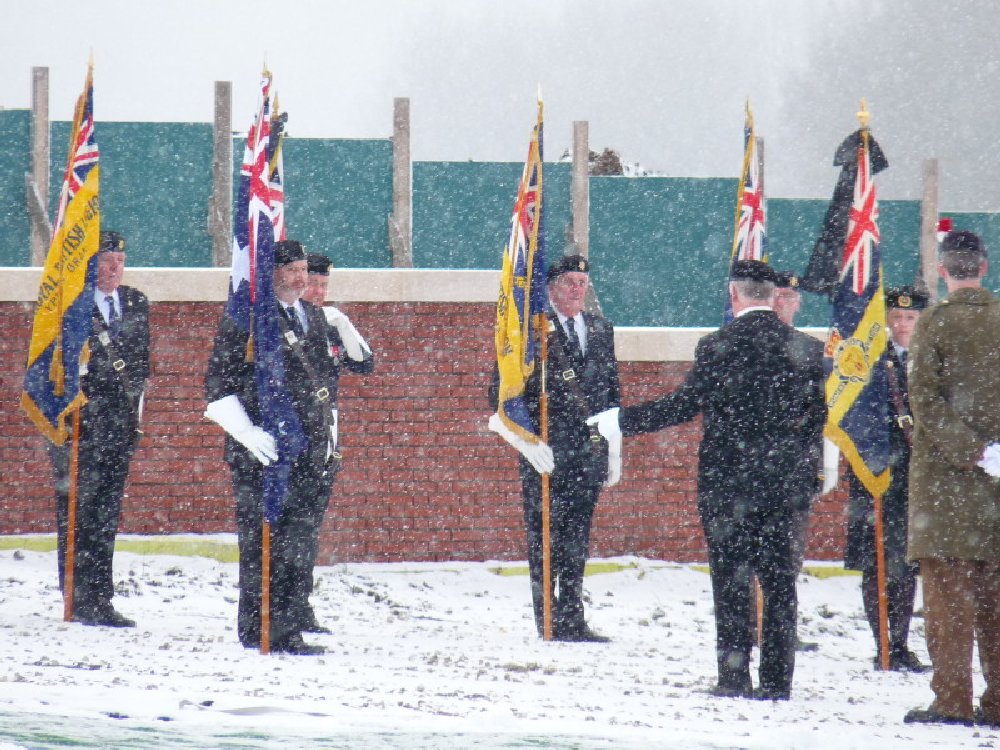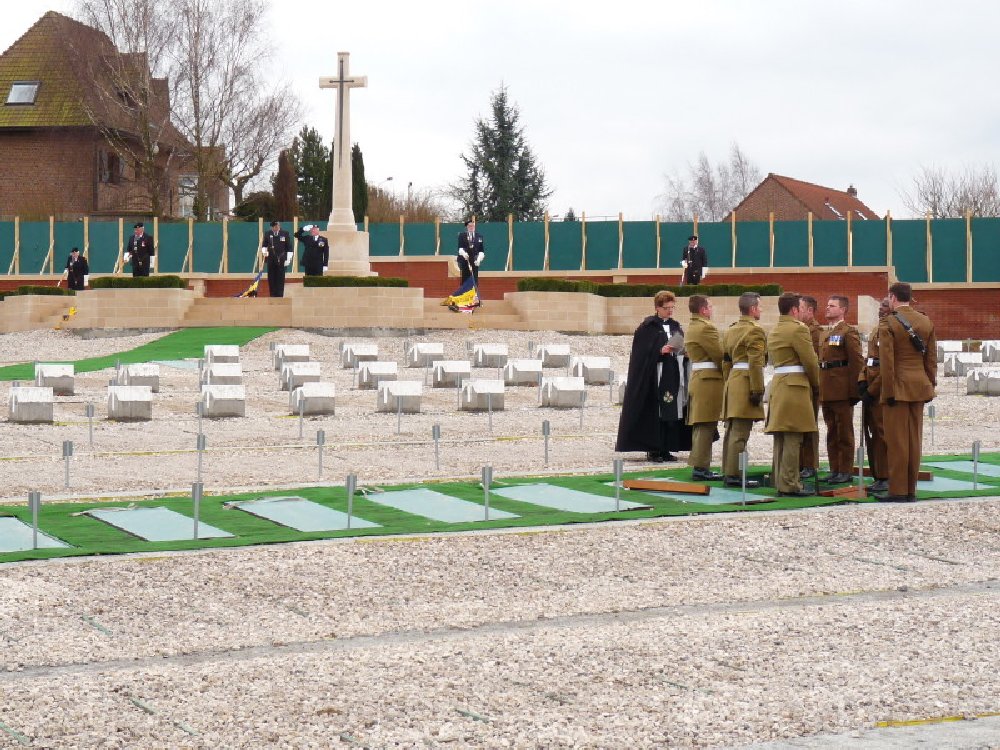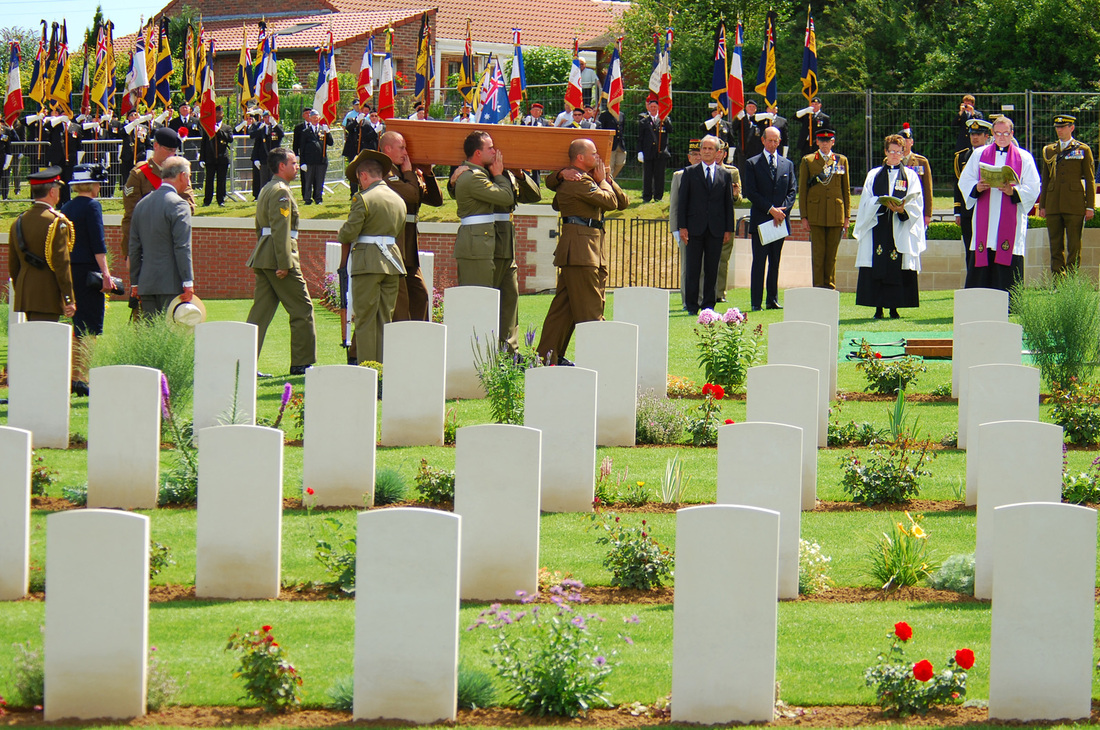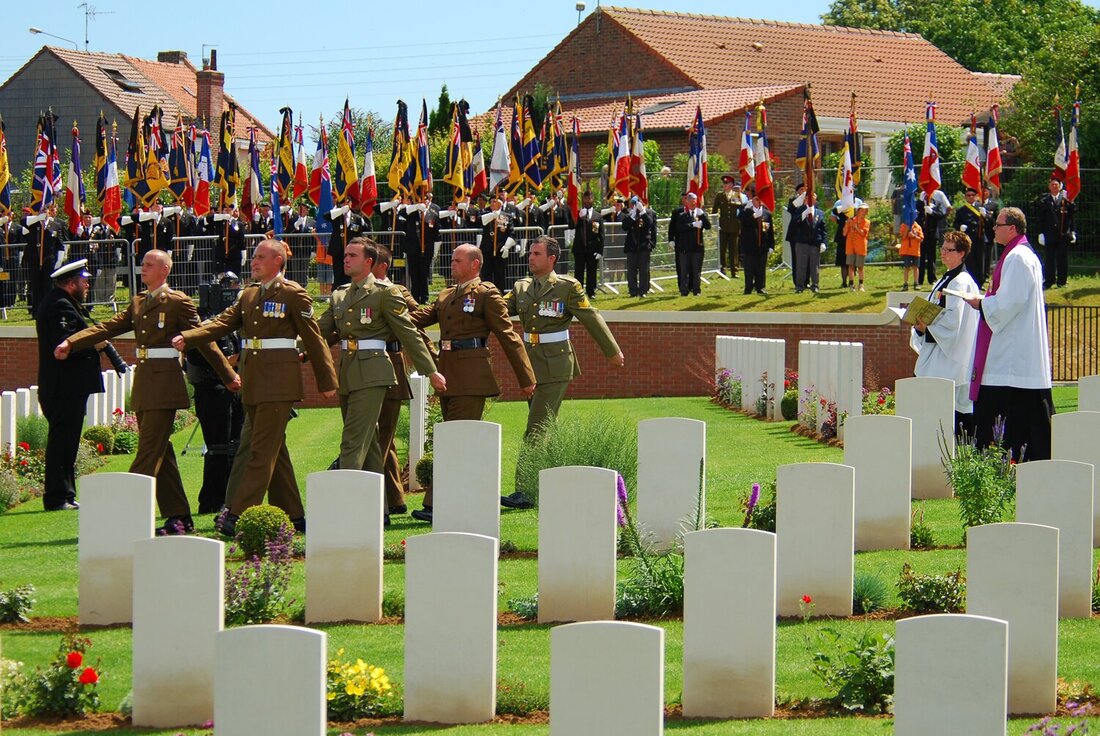- HOME
- SOLDIER RESEARCH
- WOLVERTONS AMATEUR MILITARY TRADITION
- BUCKINGHAMSHIRE RIFLE VOLUNTEERS 1859-1908
- BUCKINGHAMSHIRE BATTALION 1908-1947
- The Bucks Battalion A Brief History
- REGIMENTAL MARCH
-
1ST BUCKS 1914-1919
>
- 1914-15 1/1ST BUCKS MOBILISATION
- 1915 1/1ST BUCKS PLOEGSTEERT
- 1915-16 1/1st BUCKS HEBUTERNE
- 1916 1/1ST BUCKS SOMME JULY 1916
- 1916 1/1st BUCKS POZIERES WAR DIARY 17-25 JULY
- 1916 1/1ST BUCKS SOMME AUGUST 1916
- 1916 1/1ST BUCKS LE SARS TO CAPPY
- 1917 1/1ST BUCKS THE GERMAN RETIREMENT
- 1917 1/1st BUCKS TOMBOIS FARM
- 1917 1/1ST BUCKS THE HINDENBURG LINE
- 1917 1/1ST BUCKS 3RD BATTLE OF YPRES
- 1917 1/1st BUCKS 3RD YPRES 16th AUGUST
- 1917 1/1st BUCKS 3RD YPRES WAR DIARY 15-17 JULY
- 1917 1/1ST BUCKS 3RD BATTLE OF YPRES - VIMY
- 1917-18 1/1ST BUCKS ITALY
-
2ND BUCKS 1914-1918
>
- 1914-1916 2ND BUCKS FORMATION & TRAINING
- 1916 2/1st BUCKS ARRIVAL IN FRANCE
- 1916 2/1st BUCKS FROMELLES
- 1916 2/1st BUCKS REORGANISATION
- 1916-1917 2/1st BUCKS THE SOMME
- 1917 2/1st BUCKS THE GERMAN RETIREMENT
- 1917 2/1st BUCKS ST QUENTIN APRIL TO AUGUST 1917
- 1917 2/1st BUCKS 3RD YPRES
- 1917 2/1st BUCKS ARRAS & CAMBRAI
- 1918 2/1st BUCKS ST QUENTIN TO DISBANDMENT
-
1ST BUCKS 1939-1945
>
- 1939-1940 1BUCKS MOBILISATION & NEWBURY
- 1940 1BUCKS FRANCE & BELGIUM
- 1940 1BUCKS HAZEBROUCK
- HAZEBROUCK BATTLEFIELD VISIT
- 1940-1942 1BUCKS
- 1943-1944 1BUCKS PREPARING FOR D DAY
- COMPOSITION & ROLE OF BEACH GROUP
- BROAD OUTLINE OF OPERATION OVERLORD
- 1944 1ST BUCKS NORMANDY D DAY
- 1944 1BUCKS 1944 NORMANDY TO BRUSSELS (LOC)
- Sword Beach Gallery
- 1945 1BUCKS 1945 FEBRUARY-JUNE T FORCE 1st (CDN) ARMY
- 1945 1BUCKS 1945 FEBRUARY-JUNE T FORCE 2ND BRITISH ARMY
- 1945 1BUCKS JUNE 1945 TO AUGUST 1946
- BUCKS BATTALION BADGES
- BUCKS BATTALION SHOULDER TITLES 1908-1946
- 1939-1945 BUCKS BATTALION DRESS >
- ROYAL BUCKS KINGS OWN MILITIA
- BUCKINGHAMSHIRE'S LINE REGIMENTS
- ROYAL GREEN JACKETS
- OXFORDSHIRE & BUCKINGHAMSHIRE LIGHT INFANTRY 1741-1965
- OXF & BUCKS LI INSIGNIA >
- REGIMENTAL CUSTOMS & TRADITIONS >
- REGIMENTAL COLLECT AND PRAYER
- OXF & BUCKS LI REGIMENTAL MARCHES
- REGIMENTAL DRILL >
-
REGIMENTAL DRESS
>
- REGIMENTAL UNIFORM 1741-1896
- REGIMENTAL UNIFORM 1741-1914
- 1894 REGIMENTAL DRESS
- 1897 OFFICERS DRESS REGULATIONS
- 1900 DRESS REGULATIONS
- 1931 REGIMENTAL DRESS
- 1939-1945 REGIMENTAL DRESS
- 1950 OFFICERS DRESS REGULATIONS
- 1960 OFFICERS DRESS REGULATIONS (TA)
- 1960 REGIMENTAL MESS DRESS
- 1963 REGIMENTAL DRESS
- 1958-1969 REGIMENTAL DRESS
- HEADDRESS >
- REGIMENTAL CREST
- BATTLE HONOURS
- REGIMENTAL COLOURS >
- BRIEF HISTORY
- REGIMENTAL CHAPEL, OXFORD >
-
THE GREAT WAR 1914-1918
>
- REGIMENTAL BATTLE HONOURS 1914-1919
- OXF & BUCKS LI 1914-1919 SUMMARY INTRODUCTION
- 1 OXF & BUCKS LI 1914-1919 SUMMARY
- 2 OXF & BUCKS LI 1914-1919 SUMMARY
- 1/4 OXF & BUCKS LI 1914-1918 SUMMARY
- 2/4 OXF & BUCKS LI 1914-1918 SUMMARY
- 1/1 BUCKS BATTALION 1914-1918 SUMMARY
- 2/1 BUCKS BATTALION 1914-1918 SUMMARY
- 5 (SERVICE) OXF & BUCKS LI 1914-1918 SUMMARY
- 6 (SERVICE) OXF & BUCKS LI 1914-1918 SUMMARY
- 7 (SERVICE) OXF & BUCKS LI 1914-1918 SUMMARY
- 8 (SERVICE) OXF & BUCKS LI 1914-1918 SUMMARY
- 1st GREEN JACKETS (43rd & 52nd) 1958-1965
- 1ST GREEN JACKETS (43RD & 52ND) 1958-1965
- 1959 1ST GREEN JACKETS (43RD & 52ND)
- 1959 REGIMENTAL MARCH IN OXFORD
- 1959 DEMONSTRATION BATTALION
- 1960 1ST GREEN JACKETS (43RD & 52ND)
- 1961 1ST GREEN JACKETS (43RD & 52ND)
- 1961 THE LONGEST DAY
- 1962 1ST GREEN JACKETS (43RD & 52ND)
- 1963 1ST GREEN JACKETS (43RD & 52ND)
- 1963 CONVERSION TO “RIFLE” REGIMENT
- 1964 1ST GREEN JACKETS (43RD & 52ND)
- 1965 1ST GREEN JACKETS (43RD & 52ND)
- 1965 FORMATION OF ROYAL GREEN JACKETS
- REGULAR BATTALIONS 1741-1958
-
1st BATTALION (43rd LIGHT INFANTRY)
>
-
43rd LIGHT INFANTRY 1741-1914
>
- 43rd REGIMENT 1741-1802
- 43rd LIGHT INFANTRY 1803-1805
- 43rd LIGHT INFANTRY 1806-1809
- 43rd LIGHT INFANTRY 1809-1810
- 43rd LIGHT INFANTRY 1810-1812
- 43rd LIGHT INFANTRY 1812-1814
- 43rd LIGHT INFANTRY 1814-1818
- 43rd LIGHT INFANTRY 1818-1854
- 43rd LIGHT INFANTRY 1854-1863
- 43rd LIGHT INFANTRY 1863-1865
- 43rd LIGHT INFANTRY 1865-1897
- 43rd LIGHT INFANTRY 1899-1902
- 43rd LIGHT INFANTRY 1902-1914
-
1 OXF & BUCKS LI 1914-1919
>
-
1 OXF & BUCKS LI 1920-1939
>
- 1 OXF & BUCKS LI - 1919
- 1 OXF & BUCKS LI - 1920
- 1 OXF & BUCKS LI - 1921
- 1 OXF & BUCKS LI - 1922
- 1 OXF & BUCKS LI - 1923
- 1 OXF & BUCKS LI - 1924
- 1 OXF & BUCKS LI - 1925
- 1 OXF & BUCKS LI - 1926
- 1 OXF & BUCKS LI - 1927
- 1 OXF & BUCKS LI - 1928
- 1 OXF & BUCKS LI - 1929
- 1 OXF & BUCKS LI - 1930
- 1 OXF & BUCKS LI - 1931
- 1 OXF & BUCKS LI - 1932
- 1 OXF & BUCKS LI - 1933
- 1 OXF & BUCKS LI - 1934
- 1 OXF & BUCKS LI - 1935
- 1 OXF & BUCKS LI - 1936
- 1 OXF & BUCKS LI - 1937
- 1 OXF & BUCKS LI - 1938
- 1 OXF & BUCKS LI - 1939
- 1 OXF & BUCKS LI 1939-1945 >
-
1 OXF & BUCKS 1946-1958
>
- 1 OXF & BUCKS LI - 1946
- 1 OXF & BUCKS LI - 1947
- 1 OXF & BUCKS LI - 1948
- 1948 FREEDOM PARADES
- 1 OXF & BUCKS LI - 1949
- 1 OXF & BUCKS LI - 1950
- 1 OXF & BUCKS LI - 1951
- 1 OXF & BUCKS LI - 1952
- 1 OXF & BUCKS LI - 1953
- 1 OXF & BUCKS LI - 1954
- 1 OXF & BUCKS LI - 1955
- 1 OXF & BUCKS LI - 1956
- 1 OXF & BUCKS LI - 1957
- 1 OXF & BUCKS LI - 1958
-
43rd LIGHT INFANTRY 1741-1914
>
-
2nd BATTALION (52nd LIGHT INFANTRY)
>
- 52nd LIGHT INFANTRY 1755-1881 >
- 2 OXF LI 1881-1907
- 2 OXF & BUCKS LI 1908-1914
-
2 OXF & BUCKS LI 1914-1919
>
-
2 OXF & BUCKS LI - 1919-1939
>
- 2 OXF & BUCKS LI - 1919
- 2 OXF & BUCKS LI - 1920
- 2 OXF & BUCKS LI - 1921
- 2 OXF & BUCKS LI - 1922
- 2 OXF & BUCKS LI - 1923
- 2 OXF & BUCKS LI - 1924
- 2 OXF & BUCKS LI - 1925
- 2 OXF & BUCKS LI - 1926
- 2 OXF & BUCKS LI - 1927
- 2 OXF & BUCKS LI - 1928
- 2 OXF & BUCKS LI - 1929
- 2 OXF & BUCKS LI - 1930
- 2 OXF & BUCKS LI - 1931
- 2 OXF & BUCKS LI - 1932
- 2 OXF & BUCKS LI - 1933
- 2 OXF & BUCKS LI - 1934
- 2 OXF & BUCKS LI - 1935
- 2 OXF & BUCKS LI - 1936
- 2 OXF & BUCKS LI - 1937
- 2 OXF & BUCKS LI - 1938
- 2 OXF & BUCKS LI - 1939
-
2 OXF & BUCKS LI 1939-1945
>
- 1939-1941
- 1941-1943 AIRBORNE INFANTRY
- 1944 PREPARATION FOR D DAY
- 1944 PEGASUS BRIDGE-COUP DE MAIN
- Pegasus Bridge Gallery
- Horsa Bridge Gallery
- COUP DE MAIN NOMINAL ROLL
- MAJOR HOWARDS ORDERS
- 1944 JUNE 6
- D DAY ORDERS
- 1944 JUNE 7-13 ESCOVILLE & HEROUVILETTE
- Escoville & Herouvillette Gallery
- 1944 JUNE 13-AUGUST 16 HOLDING THE BRIDGEHEAD
- 1944 AUGUST 17-31 "PADDLE" TO THE SEINE
- "Paddle To The Seine" Gallery
- 1944 SEPTEMBER ARNHEM
- OPERATION PEGASUS 1
- 1944/45 ARDENNES
- 1945 RHINE CROSSING
- OPERATION VARSITY - ORDERS
- OPERATION VARSITY BATTLEFIELD VISIT
- 1945 MARCH-JUNE
- 2 OXF & BUCKS LI DRESS 1940-1945 >
- 2 OXF & BUCKS LI 1946-1947 >
-
1st BATTALION (43rd LIGHT INFANTRY)
>
- MILITIA BATTALIONS
- TERRITORIAL BATTALIONS
- WAR RAISED/SERVICE BATTALIONS 1914-18 & 1939-45
-
5th, 6th, 7th & 8th (SERVICE) 1914-1918
>
-
6th & 7th Bns OXF & BUCKS LI 1939-1945
>
- 6th Bn OXF & BUCKS LI 1940-1945 >
-
7th Bn OXF & BUCKS LI 1940-1945
>
- 7th Bn OXF & BUCKS LI JUNE 1940-JULY 1942
- 7th Bn OXF & BUCKS LI JULY 1942 – JUNE 1943
- 7th Bn OXF & BUCKS LI JULY 1943–OCTOBER 1943
- 7th Bn OXF & BUCKS LI OCTOBER 1943–DECEMBER 1943
- 7th Bn OXF & BUCKS LI DECEMBER 1943-JUNE 1944
- 7th Bn OXF & BUCKS LI JANUARY 1944-JUNE 1944
- 7th Bn OXF & BUCKS LI JUNE 1944–JANUARY 1945
-
5th, 6th, 7th & 8th (SERVICE) 1914-1918
>
- "IN MY OWN WORDS"
- CREDITS
REMEMBERING FROMELLES 1916-2010
By Steve Berridge
(Based on an Article I originally wrote in 2009 and published in the "Somme Bugle" newsletter of the Somme Branch of the Royal British Legion.
Over the last few years the village of Fromelles in Northern France has been in the media spotlight due to the rediscovery of First World War burial pits at the nearby Pheasant Wood. The burial pits contain the remains of British and Australian soldiers recovered by the Germans from the immediate area of their lines following the disastrous Battle of Fromelles fought 19th to 20th July 1916. The Germans had hastily buried these soldiers in an area just behind their lines, however after the war the burials were not found during the battlefield clearance of the area. As a result of much research and lobbying by an Australian, Lambis Englezos and others, eventually in May 2008 an exploratory excavation of the area where the pits were believed to be was conducted to confirm if remains were present, they were and in May 2009 excavations were started to retrieve, identify and re-bury the soldiers in individual marked graves in a new Commonwealth War Graves cemetery constructed a short way from the original burial site.
The Battle of Fromelles (known to the British in the years after the Great War as the Battle of Fleurbaix) was planned to stop fresh German troops leaving the “quiet” “nursery” sector between Armentieres andArras being withdrawn and sent further south as reinforcements for the Battle of the Somme that had been raging since the 1st July. Initially the plan was to just put down an artillery barrage to make the Germans believe that an offensive in the area was imminent, however the planners soon raised their goal to “pinching” out a salient known as the “Sugar Loaf” and possibly on toward Aubers Ridge with a full scale infantry assault. Two divisions both newly arrived on the Western Front in this “nursery” sector were chosen for the attack originally due to take place on the 17th July but postponed to the 19th.
The British 61st (2nd South Midland) Division was a Second Line Territorial Division originally formed as a reserve unit for supplying reinforcements to the 48th (South Midland) Division. The division was composed of Territorial battalions from Oxfordshire, Buckinghamshire, Berkshire, Gloucestershire, Warwickshire and Worcestershire and was composed of three brigades:-
182 Brigade-2/5th, 2/6th, 2/7th & 2/8th Royal Warwickshire Regiment
183 Brigade-2/4th & 2/6th Gloucestershire Regiment – 2/6 & 2/7Worcestershire Regiment
184 Brigade-2/1st Buckinghamshire Battalion, 2/4th Oxfordshire & Buckinghamshire Light Infantry – 2/4th Royal Berkshire Regiment – 2/5th Gloucestershire regiment
The 5th Australian Division consisting of the 8th, 14th and 15th Brigades was a result of the expansion and reorganisation of the Australian Imperial Force in early 1916 and was composed of a mixture of reinforcements from Australia and seasoned veterans of the Gallipoli campaign. The 5th Division was to be the first Australian unit to see major action on the Western Front.
Over the past few years I have visited the area of Fromelles a number of times as I am particularly interested in my family regiment, the Buckinghamshire Battalion of the Oxfordshire and Buckinghamshire Light Infantry whose 2/1st Battalion fought at the Battle of Fromelles in July 1916.
The 2/1st Buckinghamshire Battalion had in its ranks many men from my home town of Wolverton and its surrounding North Bucks towns and villages and coincidentally carried out a lot of its training less than half a mile from my present home in Northampton when it moved with the 2nd South Midland Division (Later 61st Division) to the town in early 1915.
Over the last few years the village of Fromelles in Northern France has been in the media spotlight due to the rediscovery of First World War burial pits at the nearby Pheasant Wood. The burial pits contain the remains of British and Australian soldiers recovered by the Germans from the immediate area of their lines following the disastrous Battle of Fromelles fought 19th to 20th July 1916. The Germans had hastily buried these soldiers in an area just behind their lines, however after the war the burials were not found during the battlefield clearance of the area. As a result of much research and lobbying by an Australian, Lambis Englezos and others, eventually in May 2008 an exploratory excavation of the area where the pits were believed to be was conducted to confirm if remains were present, they were and in May 2009 excavations were started to retrieve, identify and re-bury the soldiers in individual marked graves in a new Commonwealth War Graves cemetery constructed a short way from the original burial site.
The Battle of Fromelles (known to the British in the years after the Great War as the Battle of Fleurbaix) was planned to stop fresh German troops leaving the “quiet” “nursery” sector between Armentieres andArras being withdrawn and sent further south as reinforcements for the Battle of the Somme that had been raging since the 1st July. Initially the plan was to just put down an artillery barrage to make the Germans believe that an offensive in the area was imminent, however the planners soon raised their goal to “pinching” out a salient known as the “Sugar Loaf” and possibly on toward Aubers Ridge with a full scale infantry assault. Two divisions both newly arrived on the Western Front in this “nursery” sector were chosen for the attack originally due to take place on the 17th July but postponed to the 19th.
The British 61st (2nd South Midland) Division was a Second Line Territorial Division originally formed as a reserve unit for supplying reinforcements to the 48th (South Midland) Division. The division was composed of Territorial battalions from Oxfordshire, Buckinghamshire, Berkshire, Gloucestershire, Warwickshire and Worcestershire and was composed of three brigades:-
182 Brigade-2/5th, 2/6th, 2/7th & 2/8th Royal Warwickshire Regiment
183 Brigade-2/4th & 2/6th Gloucestershire Regiment – 2/6 & 2/7Worcestershire Regiment
184 Brigade-2/1st Buckinghamshire Battalion, 2/4th Oxfordshire & Buckinghamshire Light Infantry – 2/4th Royal Berkshire Regiment – 2/5th Gloucestershire regiment
The 5th Australian Division consisting of the 8th, 14th and 15th Brigades was a result of the expansion and reorganisation of the Australian Imperial Force in early 1916 and was composed of a mixture of reinforcements from Australia and seasoned veterans of the Gallipoli campaign. The 5th Division was to be the first Australian unit to see major action on the Western Front.
Over the past few years I have visited the area of Fromelles a number of times as I am particularly interested in my family regiment, the Buckinghamshire Battalion of the Oxfordshire and Buckinghamshire Light Infantry whose 2/1st Battalion fought at the Battle of Fromelles in July 1916.
The 2/1st Buckinghamshire Battalion had in its ranks many men from my home town of Wolverton and its surrounding North Bucks towns and villages and coincidentally carried out a lot of its training less than half a mile from my present home in Northampton when it moved with the 2nd South Midland Division (Later 61st Division) to the town in early 1915.
THEN AND NOW
Officers of 2/1st Bucks Battalion outside their “mess”, the cricket pavilion at the Northampton Asylum 1915
OXFORDSHIRE & BUCKINGHAMSHIRE LIGHT INFANTRY COLLECTION
OXFORDSHIRE & BUCKINGHAMSHIRE LIGHT INFANTRY COLLECTION
The same location August 2009
The following is taken from the battalion’s official history:
"The Second Buckinghamshire Battalion 1914-1918" by Major General J C Swann and gives the battalions version of events to which I have added some notes:-
“The (61st South Midland) Division was closed up on less than a Brigade frontage from opposite the Wick to Sugar Loaf salients; two Battalions from each Brigade were detailed for this attack, the remaining two being in support.
Of the 184th Brigade the (2/4th) Royal Berks were detailed for the right (300 yard frontage), the (2/1st) Bucks for the left (400 yard frontage) of the attack.
The 183rd Brigade were on the right of the Royal Berks, the Australians (59 Bn, 15 Brigade, 5th Australian Division) on the left of the Bucks, but owing to the (Sugar Loaf) salient unable to keep in touch.
(The 61 Division assault battalions were: 182 Brigade-2/6 & 2/7 Warwicks. 183 Brigade-2/4 & 2/6 Glosters. 184 Brigade-2/1 Bucks & 2/4 Berks
(4 of the 6 assault battalion’s county regiments are now represented by the RIFLES and 2 by the Royal Regiment of Fusiliers))
The Oxfords (2/4th Oxford & Bucks LI) and (2/5th) Glosters were in support and
reserve near Sailly and at Estaires and moved up during the attack to positions in front of Bacquerot Street and to some strong posts in the vicinity. The formation of dumps of S.AA., rations, water, engineer stores, etc., necessitated heavy fatigue work for days beforehand, and even the troops detailed for the attack were not exempt up to the last moment.
The preliminary bombardment, which lasted for three days, was carried out by some 350 guns of all calibres, R.F.A. and R.H.A. Batteries being pushed up to within a short distance of Tilleloy Street, many of them in exposed positions, where they suffered heavy casualties. On the afternoon of the 19th “lifts to barrage lines“were ordered for the Artillery for certain periods, varying from four to ten minutes, during which the Infantry in the trenches were to show their bayonets and steel helmets over the parapets, and officers were to whistle and shout orders with the view of inducing the enemy to man his parapet and thereby incur heavy casualties when the Artillery shortened the range on to the front parapet and continued the intense bombardment of the front and support lines.
During the last phase of the bombardment the attacking Infantry was to issue through the sally posts cut in their wire and deploy in No Man’s Land in four waves, the leading wave within 80 yards of the enemy’s parapet, if possible, and 50 yards between waves. The assault was timed for 6 p.m.
In the (Bucks) Battalion “A” Company under Captain H. Church and “D” under Captain
I. Stewart-Liberty were detailed for the attack. (A& D Coys only had 120 men between them on afrontage of 400 yards and across 420 yards of no mans land)
On the 18th “A” Company had lost 78 men owing to a short shell from one of our
own (believed to be Australian) guns falling on a gas cylinder and bursting it in the trench. This had necessitated filling up the ranks of the Company with men from the reserve and from a newly arrived draft, but it was still much under strength. On the 19th owing to the restricted front and consequent crowding in the trenches, the casualties were very heavy, amounting to nearly 100 killed and wounded before the Companies moved out to deploy for the assault. Luckily, it was not necessary to use the sally ports, which in the case of other units caused heavy losses at the start, as they had been located by the enemy, and were effectively covered by machine-gun fire. A better way had been found, and at 5.40 p.m. the assaulting Companies filed out into No Man’s Land by way of Rhondda Sap (a water filled trench dug 150 yards in front of the British front line toward theGerman lines- however this would still leave 250 yards of open No Mans land to cross!!) and lay down in four waves.
In order to complete the waves “C” Company had followed “A” and “D” and “B”
Company moved in to hold and garrison the line.
At 6 p.m. with a cheer the four waves leaped up and assaulted the enemy’s trenches. Not a man was seen to waver, but the fire brought to bear was annihilating.
Even before 5.40 p.m., the enemy machine guns (from the Sugar Loaf) had begun to get busy, and at 6 p.m. they literally mowed down the advancing waves; only a few men actually reached the German parapet, some were seen actually on the parapet, and may have got in, but none got back.
The “few men” referred to were from “A” Company who with their Commander Captain Harold Church managed to reach the German parapet. Charles Bean the
writer of the Australian Official History “The Official History of Australia in the Great War of 1914-1918” states “Upon assaulting, the centre and right of the 184th Brigade-comprising the right company of the Buckinghamshire and the survivors of the Royal Berkshire-were at once stopped by the Sugar-loaf machine guns, which as was already evident, had not been destroyed, nor even wholly silenced, during the British bombardment. On the left however, CaptainChurch, leading his company, was killed as he reached the German Breastwork, and, according to some accounts, a small section of the Western edge of the Sugar-loaf was entered, if not captured.”
Captain Church’s body was later recovered from near the Sugar Loaf and is buried in Laventie Military Cemetery along with 15 identified comrades of his battalion from the
battle.
It was also reported that one man of “D” Company, Lance Corporal Arthur Stevens managed to get into the German lines but he was killed and his body was lost and he is one of the battalions 89 “missing” from the battle who are commemorated on the Loos Memorial.
By 6.30 p.m. it was evident that the attack had failed, but it has been asserted that success could have been secured had it been possible to bring two fresh Companies to the assault. No reserves, however, were available; “B” Company was fairly intact, but definitely marked for garrison duty in the line—a few orderlies, telephone operators, etc., were with Headquarters, and the small remnant of the assaulting Companies who survived were in No Man’s Land awaiting darkness to get back. All the officers of the three Companies that had gone out were either killed or wounded except one. The position was reported to the Brigade Headquarters, and orders received to reorganise and attack again at 8.30 p.m. Reorganisation was effected so far as possible by taking 40 men from“B” Company and collecting about 80 more from
the other Companies (A, C& D).
As soon as this had been carried out, orders were received first postponing and finally cancelling the fresh attack.
Unfortunately this cancellation was not received by the Australian 58th Battalion (15th Brigade) earmarked to support the attack who went forward and sustained many casualties.
In hardly any portion of the attack of the two Divisions was any great success obtained. A party of the (2/7th) Warwicks on the right, opposite Fauquissart, gained a footing in the enemy’s line, but could not be supported, and few were able to get back. The same thing happened to an Australian Brigade on the left.
(Elements of the 5th Australian Divisions 8th and 14th Brigades had managed to reach the German first and second lines but could not be supported. Having held on through the night of 19th/20th they were ordered to withdraw early in the morning. The Australian “right” 15th Brigade who were on the Left of British 184 Brigade had the same problem as the British in having to cross over 400 yards of No mans land under very heavy fire and only reached the German lines in isolated groups but could not consolidate, leaving the 5th Divisions right flank “in the air” and subsequently the Germans were able to launch strong counter attacks that managed to regain their lines, get behind the Australians in some cases and allow them to “roll up” the defenders.)
The 5th Australian Division sustained 5,533 casualties
1,917 dead, 3,146 wounded & 470 POWs
"The Second Buckinghamshire Battalion 1914-1918" by Major General J C Swann and gives the battalions version of events to which I have added some notes:-
“The (61st South Midland) Division was closed up on less than a Brigade frontage from opposite the Wick to Sugar Loaf salients; two Battalions from each Brigade were detailed for this attack, the remaining two being in support.
Of the 184th Brigade the (2/4th) Royal Berks were detailed for the right (300 yard frontage), the (2/1st) Bucks for the left (400 yard frontage) of the attack.
The 183rd Brigade were on the right of the Royal Berks, the Australians (59 Bn, 15 Brigade, 5th Australian Division) on the left of the Bucks, but owing to the (Sugar Loaf) salient unable to keep in touch.
(The 61 Division assault battalions were: 182 Brigade-2/6 & 2/7 Warwicks. 183 Brigade-2/4 & 2/6 Glosters. 184 Brigade-2/1 Bucks & 2/4 Berks
(4 of the 6 assault battalion’s county regiments are now represented by the RIFLES and 2 by the Royal Regiment of Fusiliers))
The Oxfords (2/4th Oxford & Bucks LI) and (2/5th) Glosters were in support and
reserve near Sailly and at Estaires and moved up during the attack to positions in front of Bacquerot Street and to some strong posts in the vicinity. The formation of dumps of S.AA., rations, water, engineer stores, etc., necessitated heavy fatigue work for days beforehand, and even the troops detailed for the attack were not exempt up to the last moment.
The preliminary bombardment, which lasted for three days, was carried out by some 350 guns of all calibres, R.F.A. and R.H.A. Batteries being pushed up to within a short distance of Tilleloy Street, many of them in exposed positions, where they suffered heavy casualties. On the afternoon of the 19th “lifts to barrage lines“were ordered for the Artillery for certain periods, varying from four to ten minutes, during which the Infantry in the trenches were to show their bayonets and steel helmets over the parapets, and officers were to whistle and shout orders with the view of inducing the enemy to man his parapet and thereby incur heavy casualties when the Artillery shortened the range on to the front parapet and continued the intense bombardment of the front and support lines.
During the last phase of the bombardment the attacking Infantry was to issue through the sally posts cut in their wire and deploy in No Man’s Land in four waves, the leading wave within 80 yards of the enemy’s parapet, if possible, and 50 yards between waves. The assault was timed for 6 p.m.
In the (Bucks) Battalion “A” Company under Captain H. Church and “D” under Captain
I. Stewart-Liberty were detailed for the attack. (A& D Coys only had 120 men between them on afrontage of 400 yards and across 420 yards of no mans land)
On the 18th “A” Company had lost 78 men owing to a short shell from one of our
own (believed to be Australian) guns falling on a gas cylinder and bursting it in the trench. This had necessitated filling up the ranks of the Company with men from the reserve and from a newly arrived draft, but it was still much under strength. On the 19th owing to the restricted front and consequent crowding in the trenches, the casualties were very heavy, amounting to nearly 100 killed and wounded before the Companies moved out to deploy for the assault. Luckily, it was not necessary to use the sally ports, which in the case of other units caused heavy losses at the start, as they had been located by the enemy, and were effectively covered by machine-gun fire. A better way had been found, and at 5.40 p.m. the assaulting Companies filed out into No Man’s Land by way of Rhondda Sap (a water filled trench dug 150 yards in front of the British front line toward theGerman lines- however this would still leave 250 yards of open No Mans land to cross!!) and lay down in four waves.
In order to complete the waves “C” Company had followed “A” and “D” and “B”
Company moved in to hold and garrison the line.
At 6 p.m. with a cheer the four waves leaped up and assaulted the enemy’s trenches. Not a man was seen to waver, but the fire brought to bear was annihilating.
Even before 5.40 p.m., the enemy machine guns (from the Sugar Loaf) had begun to get busy, and at 6 p.m. they literally mowed down the advancing waves; only a few men actually reached the German parapet, some were seen actually on the parapet, and may have got in, but none got back.
The “few men” referred to were from “A” Company who with their Commander Captain Harold Church managed to reach the German parapet. Charles Bean the
writer of the Australian Official History “The Official History of Australia in the Great War of 1914-1918” states “Upon assaulting, the centre and right of the 184th Brigade-comprising the right company of the Buckinghamshire and the survivors of the Royal Berkshire-were at once stopped by the Sugar-loaf machine guns, which as was already evident, had not been destroyed, nor even wholly silenced, during the British bombardment. On the left however, CaptainChurch, leading his company, was killed as he reached the German Breastwork, and, according to some accounts, a small section of the Western edge of the Sugar-loaf was entered, if not captured.”
Captain Church’s body was later recovered from near the Sugar Loaf and is buried in Laventie Military Cemetery along with 15 identified comrades of his battalion from the
battle.
It was also reported that one man of “D” Company, Lance Corporal Arthur Stevens managed to get into the German lines but he was killed and his body was lost and he is one of the battalions 89 “missing” from the battle who are commemorated on the Loos Memorial.
By 6.30 p.m. it was evident that the attack had failed, but it has been asserted that success could have been secured had it been possible to bring two fresh Companies to the assault. No reserves, however, were available; “B” Company was fairly intact, but definitely marked for garrison duty in the line—a few orderlies, telephone operators, etc., were with Headquarters, and the small remnant of the assaulting Companies who survived were in No Man’s Land awaiting darkness to get back. All the officers of the three Companies that had gone out were either killed or wounded except one. The position was reported to the Brigade Headquarters, and orders received to reorganise and attack again at 8.30 p.m. Reorganisation was effected so far as possible by taking 40 men from“B” Company and collecting about 80 more from
the other Companies (A, C& D).
As soon as this had been carried out, orders were received first postponing and finally cancelling the fresh attack.
Unfortunately this cancellation was not received by the Australian 58th Battalion (15th Brigade) earmarked to support the attack who went forward and sustained many casualties.
In hardly any portion of the attack of the two Divisions was any great success obtained. A party of the (2/7th) Warwicks on the right, opposite Fauquissart, gained a footing in the enemy’s line, but could not be supported, and few were able to get back. The same thing happened to an Australian Brigade on the left.
(Elements of the 5th Australian Divisions 8th and 14th Brigades had managed to reach the German first and second lines but could not be supported. Having held on through the night of 19th/20th they were ordered to withdraw early in the morning. The Australian “right” 15th Brigade who were on the Left of British 184 Brigade had the same problem as the British in having to cross over 400 yards of No mans land under very heavy fire and only reached the German lines in isolated groups but could not consolidate, leaving the 5th Divisions right flank “in the air” and subsequently the Germans were able to launch strong counter attacks that managed to regain their lines, get behind the Australians in some cases and allow them to “roll up” the defenders.)
The 5th Australian Division sustained 5,533 casualties
1,917 dead, 3,146 wounded & 470 POWs
VC Corner AustralianCemetery. 410 unidentified Australians from the battle lie buried here. The screen wall at the back of the cemetery commemorates the over 1,200 Missing Australians who have No Known Grave from the Battle.
The 61st (South Midland) Division sustained 1,547casualties
519 dead 977 wounded and 61 POW
519 dead 977 wounded and 61 POW
The 61st (South Midland) Division Memorial in the town square of Laventie
The casualties in the Battalion, which had gone into action with 20 officers and 622
other ranks, were 322 of all ranks during the 18th and 19th July.
The battalion’s casualties were broken down as follows:-
OFFICERS
Killed - 4. Missing (believed Killed) - 2. Died of Wounds - 1. Wounded - 8.
OTHER RANKS -
Killed -62. Missing (believed Killed) -65, Wounded - 180
Of the battalions casualties who fell between the 18th and 20th July when the battalion was relieved in the line by 2/4th Oxford & Bucks LI:-
21 members of the battalion recorded as Killed in Action were later recovered and their remains buried in 3 cemeteries –
Aubers Ridge British(4), Laventie Military(16) and Rue-Du-Bois Military(1).
14 members of the battalion who Died of Wounds are buried in 2 cemeteries –
La Gorgue Communal (3) and Merville Communal (11)
88 members of the battalion who have No Known Grave are commemorated on the Loos Memorial.
During the following days from 21st July up to 26th July a further 9 members of the battalion Died of Wounds received in this action and are buried in named graves in 5 cemeteries stretching from the Casualty Clearing Stations just behind the front line back down the casualty evacuation route to General Hospitals on the Channel coast – Merville Communal (3), La Gorgue Communal (1), Boulogne Eastern (2), Wimereux Communal (2) and Longuenesse (St Omer) (1)).
A further member of the battalion, Serjeant Charles Austin of D Company is recorded as having Died of Wounds on the 19th of July whilst a Prisoner of War, his body was not found and he is commemorated as “Missing” on the Loos Memorial bringing the battalion’s total from the battle with No Known Grave to 89. Of the 89 missing it is believed that 52 unidentified Officers, NCO’s and men of the battalion lie in a grave in the Rue-Du-Bois Military Cemetery under one headstone that simply reads:-
This still leaves 37 members of the battalion unaccounted for, including at least 3 who Died of Wounds whilst Prisoners of War in German hands so some of the “Missing” may be among the Pheasant Wood burials.
For the action at Fromelles members of the battalion were awarded 4 Military Cross’s, 4 Distinguished Conduct Medals and 5 Military Medals (2 to Wolverton men).
The Battle of Fromelles was the Australians first major action on the Western Front, and it turned out to be a disaster so it was perhaps not surprising that scapegoats were looked for. A lot of criticism was aimed at the British 61st Division. Charles Bean again “ A particularly unfortunate, but inevitable, result of the fight was that, having been unwisely combined with a British division whose value for offence in spite of the devoted gallantry of many of its members, (mention was here made in his notes of-“The fate of Captain Church and several other officers whose bodies, with those of their parties, were long afterwards found lying near the German wire, proves the quality of parts of this division”) was recognised as doubtful, the Australian soldiers tended t accept the judgement – often unjust, but already deeply impressed by the occurrences at the Suvla (Gallipoli) landing – that the “Tommies” could not be relied upon to uphold a flank in a stiff fight.”
The 61st Division were also accused by their own higher staff of “lacking offensive spirit”. However what is often forgotten is that both Divisions were new and inexperienced to the Western Front, the British 61st Division was also well understrength, in some cases up to 50% and had seen no major action up till now; the Australian battalions on the other hand were up to strength and most had a proportion of experienced veterans from the Gallipoli campaign in their ranks who had already seen action.
Much was made of the British failing to take their objectives, but bearing in mind that their already tired and understrength battalions had already suffered a great may casualties from the German counter bombardment whilst still in their trenches and that as they started their assault by going through the breastwork sally ports were
almost immediately cut down by unsurpressed German Machine fire, as the 2/1st
Bucks Battalion war diary states “ the enemy’s machine gun fire prevented any advance without extermination”.
It is therefore amazing that any British troops reached the German trenches at all, but they did, the 2/7 Warwicks on the right managed to enter and hold for a while the enemy trenches and a party of the 2/1 Bucks Battalion on the left were seen to enter the German trenches although none returned!
It is also interesting to note when you study the 1916 trench maps and the opposing front lines and brigade frontages that the Australian 8th and 14th Brigades who did manage to reach the German lines had a shorter distance of No Mans Land to cross and narrower frontages compared with their own 15th Brigade and virtually the whole of the British 61st Division!
For the action at Fromelles members of the battalion were awarded 4 Military Cross’s, 4 Distinguished Conduct Medals and 5 Military Medals (2 to Wolverton men).
The Battle of Fromelles was the Australians first major action on the Western Front, and it turned out to be a disaster so it was perhaps not surprising that scapegoats were looked for. A lot of criticism was aimed at the British 61st Division. Charles Bean again “ A particularly unfortunate, but inevitable, result of the fight was that, having been unwisely combined with a British division whose value for offence in spite of the devoted gallantry of many of its members, (mention was here made in his notes of-“The fate of Captain Church and several other officers whose bodies, with those of their parties, were long afterwards found lying near the German wire, proves the quality of parts of this division”) was recognised as doubtful, the Australian soldiers tended t accept the judgement – often unjust, but already deeply impressed by the occurrences at the Suvla (Gallipoli) landing – that the “Tommies” could not be relied upon to uphold a flank in a stiff fight.”
The 61st Division were also accused by their own higher staff of “lacking offensive spirit”. However what is often forgotten is that both Divisions were new and inexperienced to the Western Front, the British 61st Division was also well understrength, in some cases up to 50% and had seen no major action up till now; the Australian battalions on the other hand were up to strength and most had a proportion of experienced veterans from the Gallipoli campaign in their ranks who had already seen action.
Much was made of the British failing to take their objectives, but bearing in mind that their already tired and understrength battalions had already suffered a great may casualties from the German counter bombardment whilst still in their trenches and that as they started their assault by going through the breastwork sally ports were
almost immediately cut down by unsurpressed German Machine fire, as the 2/1st
Bucks Battalion war diary states “ the enemy’s machine gun fire prevented any advance without extermination”.
It is therefore amazing that any British troops reached the German trenches at all, but they did, the 2/7 Warwicks on the right managed to enter and hold for a while the enemy trenches and a party of the 2/1 Bucks Battalion on the left were seen to enter the German trenches although none returned!
It is also interesting to note when you study the 1916 trench maps and the opposing front lines and brigade frontages that the Australian 8th and 14th Brigades who did manage to reach the German lines had a shorter distance of No Mans Land to cross and narrower frontages compared with their own 15th Brigade and virtually the whole of the British 61st Division!
The Battle of Fromelles has been commemorated for many years by the local inhabitants of the village which has naturally had a good deal of Australian interest but has sadly been seemingly forgotten by the British who seem to turn their attention to the Somme and Ypres. However on Sunday 19th July 2009 I was honoured to be able to represent the branch and regiment in my capacity as Standard Bearer of the Royal British Legion Somme Branch and attend three services held in and around the village of Fromelles to commemorate the 93rd anniversary of the battle.
The first was held at the Australian Memorial Park outside of Fromelles where a portion of the German second line captured by the Australian 14th Brigade has been turned into a memorial park complete with the remains of some German bunkers constructed in 1917 to prevent this ground being captured for a third time (The first time was in May 1915 when the British 8th Division (2nd Rifle Brigade and 1st Royal Irish Rifles) had assaulted over the same ground during the Battle of Aubers Ridge and captured these lines and beyond until being forced out). Also in the park is a superb statue of an Australian soldier or “Digger” rescuing a wounded comrade or “cobber” from the battlefield, many wounded were recovered from the battlefield during the following days.
The first was held at the Australian Memorial Park outside of Fromelles where a portion of the German second line captured by the Australian 14th Brigade has been turned into a memorial park complete with the remains of some German bunkers constructed in 1917 to prevent this ground being captured for a third time (The first time was in May 1915 when the British 8th Division (2nd Rifle Brigade and 1st Royal Irish Rifles) had assaulted over the same ground during the Battle of Aubers Ridge and captured these lines and beyond until being forced out). Also in the park is a superb statue of an Australian soldier or “Digger” rescuing a wounded comrade or “cobber” from the battlefield, many wounded were recovered from the battlefield during the following days.
The Australian Memorial Park
The second service was held about 200 yards down the road at the VC Corner Australian Cemetery where around 410 unidentified Australians recovered after the Armistice were buried and the screen wall of the cemetery is also the Memorial to the Missing and records the names of the over 1,200 Australians who have No Known Grave from the battle.
The third service was held at the Pheasant Wood burial site.
The second service was held about 200 yards down the road at the VC Corner Australian Cemetery where around 410 unidentified Australians recovered after the Armistice were buried and the screen wall of the cemetery is also the Memorial to the Missing and records the names of the over 1,200 Australians who have No Known Grave from the battle.
The third service was held at the Pheasant Wood burial site.
At the going down of the sun,
And in the morning,
We Will Remember Them!
And in the morning,
We Will Remember Them!
January 30th 2010 – Re Burial of First Fromelles Soldier
Saturday 30th January saw members of the RBL Somme Branch travel on a very chilly and snowy day to the Village of Fromelles in Northern France to attend the reburial of the first of 250 soldiers exhumed from the Pheasant Wood burial pits during 2009.
The service started the “Start of the day” ceremony during which all participants were brought to attention and then the British, Australian and French flags were raised to full mast. After the Chaplains team then held a short service the three flags were then lowered to “half mast” where they would remain until the end of the ceremony.
The firing party then lined the central pathway from the Cemetery entrance to the cross of sacrifice with rifles at the “reverse”.
Saturday 30th January saw members of the RBL Somme Branch travel on a very chilly and snowy day to the Village of Fromelles in Northern France to attend the reburial of the first of 250 soldiers exhumed from the Pheasant Wood burial pits during 2009.
The service started the “Start of the day” ceremony during which all participants were brought to attention and then the British, Australian and French flags were raised to full mast. After the Chaplains team then held a short service the three flags were then lowered to “half mast” where they would remain until the end of the ceremony.
The firing party then lined the central pathway from the Cemetery entrance to the cross of sacrifice with rifles at the “reverse”.
“What a wonderful day for drill” - 30th January 2010
(I am second from left with the National flag of Australia)
The hearse then arrived carrying the body of an “Unknown” soldier on its last journey from the forensic complex beside Pheasant Wood where the bodies had originally been recovered too and arrived at the cemetery entrance where it was received by the bearer party made up of three soldiers each from the Australian Army and the Royal Regiment of Fusiliers under the command of an Australian Army Serjeant.
The Chaplains leading the coffin then marched in slow time into the cemetery and moved toward the grave side.
Once at the graveside the coffin was very solemnly lowered into the grave during which the standards were dipped in the act of homage. The bearer party then returned to attention and then under their NCO marched back to take their places by the entrance wall alongside the firing party.
The regimental “collects” of the Australian Army and the Royal Regiment of Fusiliers were then said by representative soldiers. The “exhortation” followed after which the firing party fired three volleys.
After the volleys the Last Post was played on an Australian Bugle said to be associated with a soldier involved in the Fromelles action, once again the standards were dipped in homage.
After the one minutes silence the reveille was sounded by a bugler of the RRF.
Then followed speeches from various dignitaries from the United Kingdom, Australia, France and the Commonwealth War Graves Commission.
The chaplains then gave the “Blessing” after which the three national flags were hoisted to “full mast” and then lowered to signify the end of the day. After this all participants marched out of the
Cemetery.
On this occasion I was honoured to be invited to carry the National flag of Australia alongside the RBL Standards.
(I am second from left with the National flag of Australia)
The hearse then arrived carrying the body of an “Unknown” soldier on its last journey from the forensic complex beside Pheasant Wood where the bodies had originally been recovered too and arrived at the cemetery entrance where it was received by the bearer party made up of three soldiers each from the Australian Army and the Royal Regiment of Fusiliers under the command of an Australian Army Serjeant.
The Chaplains leading the coffin then marched in slow time into the cemetery and moved toward the grave side.
Once at the graveside the coffin was very solemnly lowered into the grave during which the standards were dipped in the act of homage. The bearer party then returned to attention and then under their NCO marched back to take their places by the entrance wall alongside the firing party.
The regimental “collects” of the Australian Army and the Royal Regiment of Fusiliers were then said by representative soldiers. The “exhortation” followed after which the firing party fired three volleys.
After the volleys the Last Post was played on an Australian Bugle said to be associated with a soldier involved in the Fromelles action, once again the standards were dipped in homage.
After the one minutes silence the reveille was sounded by a bugler of the RRF.
Then followed speeches from various dignitaries from the United Kingdom, Australia, France and the Commonwealth War Graves Commission.
The chaplains then gave the “Blessing” after which the three national flags were hoisted to “full mast” and then lowered to signify the end of the day. After this all participants marched out of the
Cemetery.
On this occasion I was honoured to be invited to carry the National flag of Australia alongside the RBL Standards.
February 2010 – Reburials of 248 Fromelles Soldiers
During the following three weeks of February on every Monday, Wednesday and Friday the remaining 248 recovered soldiers were buried with full military honours in the new cemetery. Each day of burials was conducted the same the only variances were the weather and the number of soldiers interred. The structure of the day was as follows:
Start of the Day: Each day would start with the “Start of the day”ceremony which involved the raising of the British and Australian flags within the cemetery and then lowering them to “half mast”.
The troops would then take up their positions for the burials.
The Burial: Each recovered soldier was brought by hearse from the Pheasant Wood complex and brought to the cemetery entrance as had his comrade on the 30th January.
As the coffin was removed from the hearse by the bearer party one British and one Australian Army Officer would enter the cemetery and stand by the entrance to salute the coffin as it entered the cemetery. This was also the signal for the Royal British Legion Standards to take post at the “slope” from the rear of the Cross of Sacrifice platform to the front of the platform overlooking the cemetery. As the coffin entered the standard would then be brought to the “carry” and would remain so until the coffin reached the graveside. As the bearer party carried out its duties as the coffin started to be lowered the Standard would be dipped as for the act of homage and raised again once the bearer party were marched off. The standard would then be returned to the slope and marched to the rear of the platform, this procedure was carried out for each of the 248 burials.
I am proud to report that the Somme Branch Standard was on parade and dipped for every one of the 248 soldiers buried in that cemetery in February, through snow, ice, wind, rain, sleet and sun. Our branch standard was carried by myself(Steve Berridge) on six of the nine days, two days by our Secretary and Deputy Standard Bearer David Williams and one day by Chris Lock of the Ypres Branch. Standards from Ypres, Rheindalen, Pas De Calais,Brittany and Dorset also paraded alongside the Somme Branch standard on some days during that time.
The Close of Day: After the days internments had been completed the“Close of Day” ceremony would take place, the bearer party, the firing party, flag orderlies, Officers and clergy would form up inside the cemetery and the RBL Standard(s) would form up on the Cross of Sacrifice platform. A short service would then take place
followed by the Regimental Collects of the Australian Army, Royal Regiment of Fusiliers (first two weeks) and the Rifles (last week). At this point the standards would be brought to the carry in time for the “Exhortation” which would be followed by the firing party firing three volleys after which the “Last Post” was played (standards dipped), the silence and Reveille. After the blessing the parade would depart the cemetery.
On the evening of the last burial the Rifles contingent along with the Standards of the Somme and Ypres Branches paraded under the Menin Gate in Ypres for the Last Post Ceremony.
A moving experience for all.
During the following three weeks of February on every Monday, Wednesday and Friday the remaining 248 recovered soldiers were buried with full military honours in the new cemetery. Each day of burials was conducted the same the only variances were the weather and the number of soldiers interred. The structure of the day was as follows:
Start of the Day: Each day would start with the “Start of the day”ceremony which involved the raising of the British and Australian flags within the cemetery and then lowering them to “half mast”.
The troops would then take up their positions for the burials.
The Burial: Each recovered soldier was brought by hearse from the Pheasant Wood complex and brought to the cemetery entrance as had his comrade on the 30th January.
As the coffin was removed from the hearse by the bearer party one British and one Australian Army Officer would enter the cemetery and stand by the entrance to salute the coffin as it entered the cemetery. This was also the signal for the Royal British Legion Standards to take post at the “slope” from the rear of the Cross of Sacrifice platform to the front of the platform overlooking the cemetery. As the coffin entered the standard would then be brought to the “carry” and would remain so until the coffin reached the graveside. As the bearer party carried out its duties as the coffin started to be lowered the Standard would be dipped as for the act of homage and raised again once the bearer party were marched off. The standard would then be returned to the slope and marched to the rear of the platform, this procedure was carried out for each of the 248 burials.
I am proud to report that the Somme Branch Standard was on parade and dipped for every one of the 248 soldiers buried in that cemetery in February, through snow, ice, wind, rain, sleet and sun. Our branch standard was carried by myself(Steve Berridge) on six of the nine days, two days by our Secretary and Deputy Standard Bearer David Williams and one day by Chris Lock of the Ypres Branch. Standards from Ypres, Rheindalen, Pas De Calais,Brittany and Dorset also paraded alongside the Somme Branch standard on some days during that time.
The Close of Day: After the days internments had been completed the“Close of Day” ceremony would take place, the bearer party, the firing party, flag orderlies, Officers and clergy would form up inside the cemetery and the RBL Standard(s) would form up on the Cross of Sacrifice platform. A short service would then take place
followed by the Regimental Collects of the Australian Army, Royal Regiment of Fusiliers (first two weeks) and the Rifles (last week). At this point the standards would be brought to the carry in time for the “Exhortation” which would be followed by the firing party firing three volleys after which the “Last Post” was played (standards dipped), the silence and Reveille. After the blessing the parade would depart the cemetery.
On the evening of the last burial the Rifles contingent along with the Standards of the Somme and Ypres Branches paraded under the Menin Gate in Ypres for the Last Post Ceremony.
A moving experience for all.
The last of the February Burials is laid to rest.
(I am the Standard Bearer in front of the RBL Parade Marshall in the centre.)
(I am the Standard Bearer in front of the RBL Parade Marshall in the centre.)
July 19th 2010 - Reburial of the last of the 250 Fromelles Soldiers and the Opening Ceremony of Fromelles (Pheasant Wood) Cemetery.
In the months after the 249th soldier had been buried at Fromelles(Pheasant Wood) Cemetery the place had been transformed from the bleak gravel covered site of January/February to the beautiful garden that is a Commonwealth WarGraves Commission Cemetery. All of the burials now had a proper headstone. During the intervening months identification boards had managed to identify 205 as “Australian Soldiers of the Great War” of which 96 had been identified by name which was inscribed on their headstones, only three soldiers so far have been identified as “A British Soldier of the Great War”, the remaining 42 being “A Soldier of the Great War”, further attempts at identification of the “Known Unto God” will continue until 2014.
On the morning of the 19th July 2010 the 94th anniversary of the Battle we made our way to Fromelles to take part in the last act of this remarkable tale.
The day was a complete contrast to the earlier reburials of February, the weather was very warm and sunny, and whereas in February sometimes you could count the number of spectators on one hand – now, in the words of Colour Serjeant Bourne of the 24th, there were “thousands of’em”!
For the Standard Bearers, phase one was to line the approach road from the Village Church to the entrance to the New Cemetery site. On this day I was very honoured to be once again carrying the Union Standard, our Branch Standard again carried by David Williams and joined by the RBL National Standard (John Grimes) and a multitude of RBL standards from across the UK and the continent. As the funeral procession, consisting of a horse drawn World War One General Service Wagon carrying the last soldier on his final journey, the Minden Band of the Queens Division, the bearer and firing parties and the rest of the cortege passed us we were to dip our standards as in the act of homage however as the road was narrow and the cortege wide we could not carry out a normal dip “in case we alarmed the horses” but had to dip to the side, this was done in succession by the individual standard bearers as the front of the procession passed, and then raised back to the carry as the last member of the procession passed giving a very graceful “ripple” effect (some would probably
call it a slow Mexican wave!).
Once the cortege had passed it was onto phase two. We were marched around to the rear of the cemetery and onto the bank overlooking the cemetery from where we could see the remainder of the burial service take place.
The service was very similar in structure to the earlier reburials with the firing party now lining the grass path from the gate to the graveside with rifles at the reverse.
In the months after the 249th soldier had been buried at Fromelles(Pheasant Wood) Cemetery the place had been transformed from the bleak gravel covered site of January/February to the beautiful garden that is a Commonwealth WarGraves Commission Cemetery. All of the burials now had a proper headstone. During the intervening months identification boards had managed to identify 205 as “Australian Soldiers of the Great War” of which 96 had been identified by name which was inscribed on their headstones, only three soldiers so far have been identified as “A British Soldier of the Great War”, the remaining 42 being “A Soldier of the Great War”, further attempts at identification of the “Known Unto God” will continue until 2014.
On the morning of the 19th July 2010 the 94th anniversary of the Battle we made our way to Fromelles to take part in the last act of this remarkable tale.
The day was a complete contrast to the earlier reburials of February, the weather was very warm and sunny, and whereas in February sometimes you could count the number of spectators on one hand – now, in the words of Colour Serjeant Bourne of the 24th, there were “thousands of’em”!
For the Standard Bearers, phase one was to line the approach road from the Village Church to the entrance to the New Cemetery site. On this day I was very honoured to be once again carrying the Union Standard, our Branch Standard again carried by David Williams and joined by the RBL National Standard (John Grimes) and a multitude of RBL standards from across the UK and the continent. As the funeral procession, consisting of a horse drawn World War One General Service Wagon carrying the last soldier on his final journey, the Minden Band of the Queens Division, the bearer and firing parties and the rest of the cortege passed us we were to dip our standards as in the act of homage however as the road was narrow and the cortege wide we could not carry out a normal dip “in case we alarmed the horses” but had to dip to the side, this was done in succession by the individual standard bearers as the front of the procession passed, and then raised back to the carry as the last member of the procession passed giving a very graceful “ripple” effect (some would probably
call it a slow Mexican wave!).
Once the cortege had passed it was onto phase two. We were marched around to the rear of the cemetery and onto the bank overlooking the cemetery from where we could see the remainder of the burial service take place.
The service was very similar in structure to the earlier reburials with the firing party now lining the grass path from the gate to the graveside with rifles at the reverse.
The Last Soldier is carried to his final resting place Photo CWGC
The Bearers march back Photo CWGC
(I can be seen on the left of the photo with the Union Standard just above the Naval photographer)
The bearer party consisting of soldiers from the Rifles, the RRF and the Australian Army took the coffin from the GS wagon and the procession lead by the clergy and followed by the mourners including HRH the Prince of Wales and the Governor General of Australia made its way to the graveside.
Once at the graveside the coffin was lowered and the standards dipped in the act of homage. As the bearer party marched off the standards were raised to the carry.
The Regimental Collects of the Australian Army, the RRF and the Rifles were then
said followed by the exhortation.
The firing party then fired three volleys which were followed by the Last Post –The
Silence – Reveille.
The Blessing was then said and the national flags were raised from half to full mast.
Wreaths were then laid by HRH the Prince of Wales and the Governor General of Australia, HRH the Duke of Kent and the French Secretary of State for Defence and Veterans.
This was followed by speeches after which HRH the Prince of Wales dedicated the new cemetery.
The three national anthems were played followed by “Keep the home fires burning”
bringing the ceremony to a close.
JULY 19TH 2011 – FROMELLES A YEAR ON
On the 19th July 2011 officers and members of the Somme Branch attended the Ceremonies to commemorate the 1916 Battle of Fromelles.
Ceremonies were held at VC Corner Australian Cemetery and the Australian Memorial Park.
Later on a third service was held at the new Fromelles (Pheasant Wood) Cemetery to re-dedicate 14 of the headstones of the newly identified Australian Soldiers who lie
there.
This was very moving for us as we have been involved with the burials of all the 250 men in this cemetery from the first burial to the last, all were originally buried as “Unkowns” and now many of them have been given their identities back.
(I can be seen on the left of the photo with the Union Standard just above the Naval photographer)
The bearer party consisting of soldiers from the Rifles, the RRF and the Australian Army took the coffin from the GS wagon and the procession lead by the clergy and followed by the mourners including HRH the Prince of Wales and the Governor General of Australia made its way to the graveside.
Once at the graveside the coffin was lowered and the standards dipped in the act of homage. As the bearer party marched off the standards were raised to the carry.
The Regimental Collects of the Australian Army, the RRF and the Rifles were then
said followed by the exhortation.
The firing party then fired three volleys which were followed by the Last Post –The
Silence – Reveille.
The Blessing was then said and the national flags were raised from half to full mast.
Wreaths were then laid by HRH the Prince of Wales and the Governor General of Australia, HRH the Duke of Kent and the French Secretary of State for Defence and Veterans.
This was followed by speeches after which HRH the Prince of Wales dedicated the new cemetery.
The three national anthems were played followed by “Keep the home fires burning”
bringing the ceremony to a close.
JULY 19TH 2011 – FROMELLES A YEAR ON
On the 19th July 2011 officers and members of the Somme Branch attended the Ceremonies to commemorate the 1916 Battle of Fromelles.
Ceremonies were held at VC Corner Australian Cemetery and the Australian Memorial Park.
Later on a third service was held at the new Fromelles (Pheasant Wood) Cemetery to re-dedicate 14 of the headstones of the newly identified Australian Soldiers who lie
there.
This was very moving for us as we have been involved with the burials of all the 250 men in this cemetery from the first burial to the last, all were originally buried as “Unkowns” and now many of them have been given their identities back.
Proudly powered by Weebly
